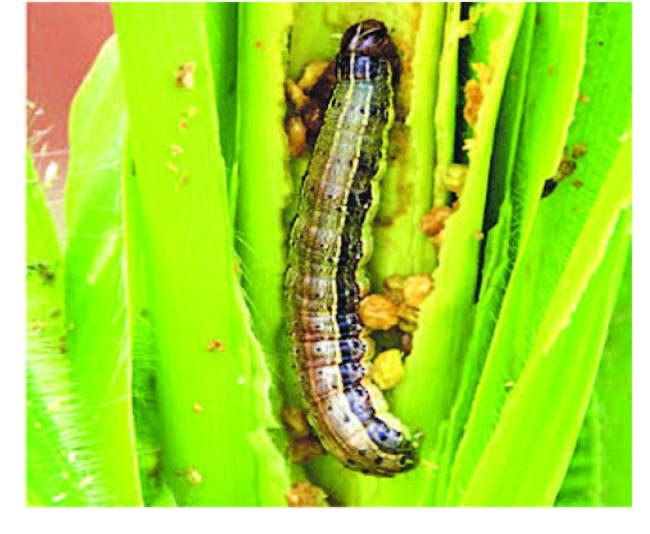
Sri Lanka has felt the impact of invasive alien animals and plants affecting agriculture over several decades.
The introduction of water hyacinth (1905), Salvinia (1939) and Parthenium (1999) are some invasive alien plants that have affected our water bodies and land. Steps are being taken to overcome the threat from these species by even using biological control methods, said Senior Professor, Weed Science, Department of Crop Science, Faculty of Agriculture, University of Peradeniya and President, Weed Science Society of Sri Lanka, Prof. Buddhi Marambe.
However, he said the battle to get rid of the menace continues despite the challenge to completely eradicate the threat to crops.
The Fall Army Worm (FAW; SenaDalambuwa; scientific name: Spodopterafrugiperda) hit the headlines of news reports and took the country by surprise in late 2018. Early warnings reached Sri Lanka from India since mid-2018 regarding the potential invasion of this pest.
However, the insect landed in the country later, mainly affecting the maize crop. Crop losses were calculated to be in the range of 5-25 percent depending on the location.
The Department of Agriculture, Faculties of the Agriculture of universities, Provincial Department of Agriculture, private sector and the farming community joined forces to control the spread of the alien pest, mainly by using pesticides to bring down the population densities. The drop of pest population densities will always help any natural enemy and other potential techniques to take over the control in the long run. “We succeeded in these efforts to a great extent,” Prof. Marambe said. A team of scientists led by Drs. Suranga Kodithuwakku and Dimanthi Jayatillake of the Faculty of Agriculture at the University of Peradeniya supported the Department of Agriculture (DOA) by using molecular techniques to identify the insect accurately.Scientists from the Plant Protection Service (PPS) of the DOA and elsewhere confirmed the life cycle of the pests and identified the sensitive growth stages of the pest (early instars of the caterpillar) to impose control measures effectively.These efforts immensely supported the DOA, other agencies and farming community to effectively embark on control programs. Despite these, after about 18 months, we now hear again of the resurgence of the pest during the Yala season 2020, especially from the Badulla area.
All scientists knew that the FAW has come to stay. In a previous interview with the Sunday Observer in 2019, the author of this article clearly stated the same. This has been the case in almost all countries the pest has invaded. The message was for everyone to be vigilant, monitor the situation, and not to be complacent that the pest has vanished after the initial success of its control. Resurgence of such invasive pests need immediate and site-specific treatment to bring down their population. Careful selection and effective use of pesticides will support the exercise during the early stages. If the observed population density is low, manual collection of the caterpillars and destroying them would help reduce economic losses. Revival of invasive alien pests can take place due to many reasons. On a global scale, changes in the climate are considered as one the major causes for pest resurgence. Loss of natural enemies in an ecosystem is also a favourable situation for an insect-pest to re-emerge.
However, FAW is an alien, and considering its patterns of invasion, it is less likely that we have strong natural enemies to reduce the number of pests. Scientists are still not certain what made the pest re-appear in higher densities in certain parts of the country. Destroying the pest alone will not help, but there is a need to understand what alternate hosts (e.g. weeds) the insect-pest would use to survive in the environment.
